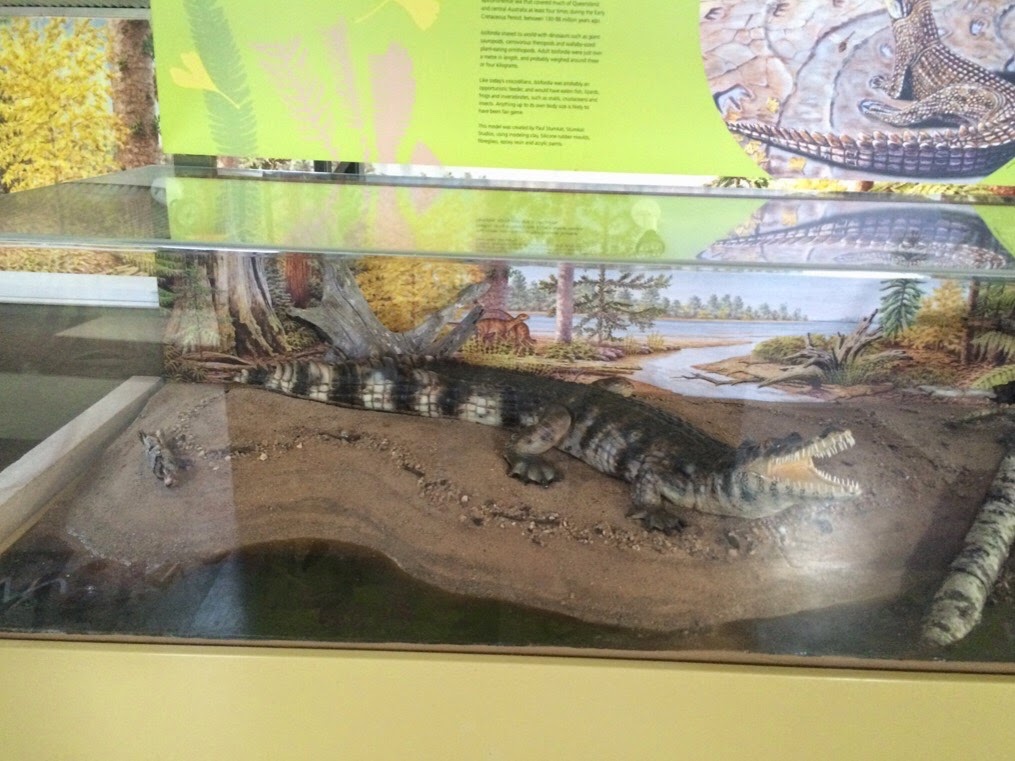

The Collection tour gives an overview of the history of the museum following the discovery of dinosaur bones by David Elliott on his pastoral property near Winton. There are bones from three dinosaurs on display - sauropods Elliott and Matilda and carnivore Banjo.

 The Laboratory is where we're headed for. This is the largest dinosaur laboratory in the southern hemisphere, with capacity for about ten volunteers who prepare the dinosaur bones. There are around 100 volunteers who work in the laboratory for anything from a day or two to a few months at a time.
The Laboratory is where we're headed for. This is the largest dinosaur laboratory in the southern hemisphere, with capacity for about ten volunteers who prepare the dinosaur bones. There are around 100 volunteers who work in the laboratory for anything from a day or two to a few months at a time.
 Volunteers come from all over Australia and even from New Zealand. Minimum age is 12 and there's no maximum age (the oldest volunteer at the moment is in his 80s). Previous experience is not required and training is "on the job". Ten days working in the laboratory leads to becoming an Honorary Dinosaur Technician.
Volunteers come from all over Australia and even from New Zealand. Minimum age is 12 and there's no maximum age (the oldest volunteer at the moment is in his 80s). Previous experience is not required and training is "on the job". Ten days working in the laboratory leads to becoming an Honorary Dinosaur Technician.

On arrival we undertook an induction session before we started working on our rock covered dinosaur bones. The rock was removed using tiny jack hammers with tungsten tips. Over the 10 days of our course we'll use several different tools and will learn many skills.


It's a real buzz to see dinosaur bone emerge from the rock after 98million years. There aren't many "firsts" left but we are the first people on earth to see these bones.
We've both been working on pieces of one of Matilda's ribs. Our pieces fit together and the rib would be about 2m long when complete.
As well as working in the laboratory "prepping" the bones, AAOD conducts a dig over a three weeks in the winter months. This year the dig runs through May/June and will be held about 90km from Winton. Volunteers are a mainstay of this activity too.


The Stage 3 development of the Museum is about to be launched. This will be located a few kms further along the jump-up and will feature a new Collections building and a series of life sized dioramas with walking tracks. It will be a real WOW!! experience.
We're able to stay on the jump-up in our caravan while we're working here. Life on the jump-up is good. We're 75m above the surrounding pastoral land so the views and sunsets are magnificent.
We'll definitely be back to work here again and we're looking forward to seeing the new developments completed.



































